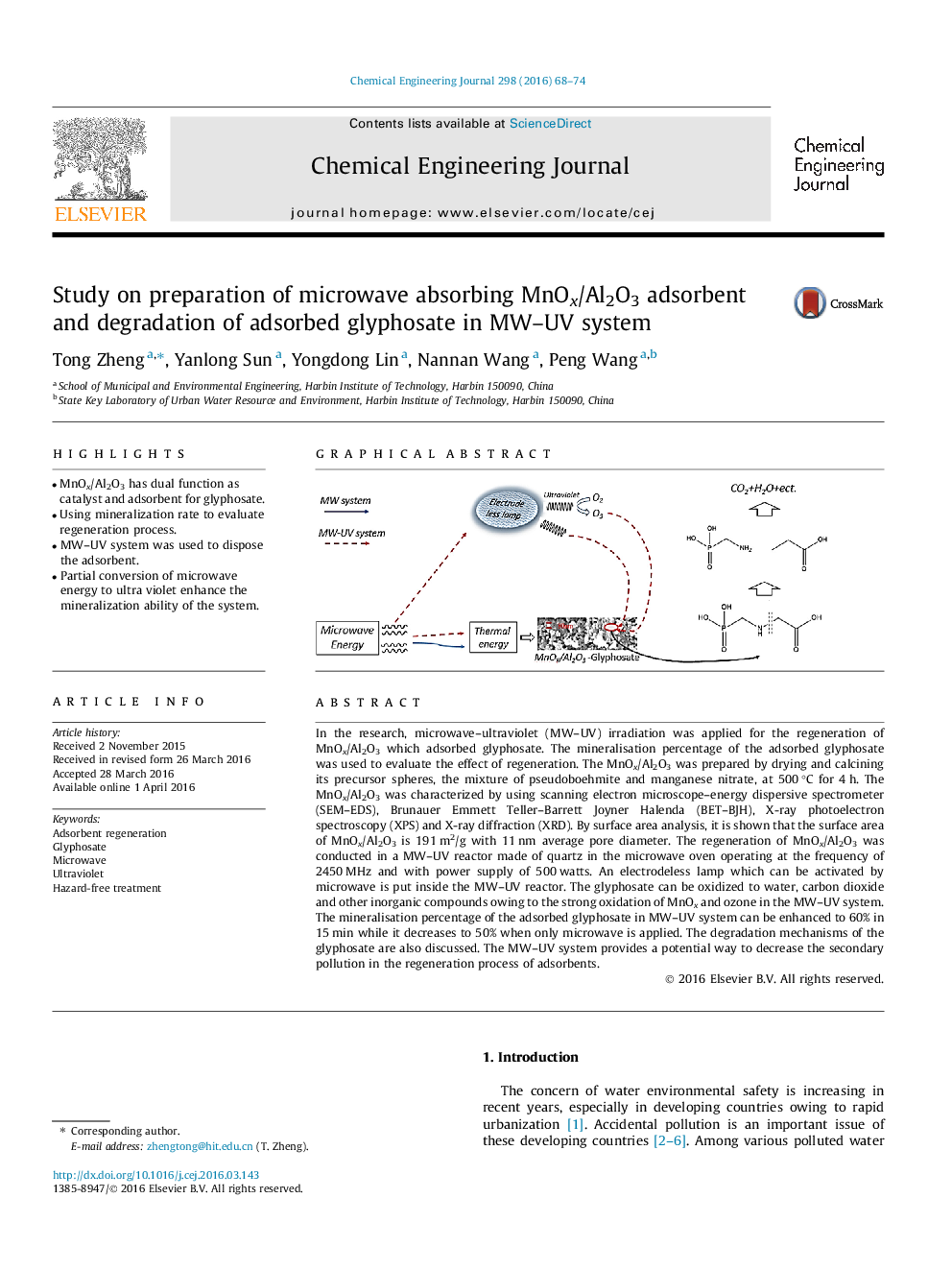| Article ID | Journal | Published Year | Pages | File Type |
|---|---|---|---|---|
| 145535 | Chemical Engineering Journal | 2016 | 7 Pages |
•MnOx/Al2O3 has dual function as catalyst and adsorbent for glyphosate.•Using mineralization rate to evaluate regeneration process.•MW–UV system was used to dispose the adsorbent.•Partial conversion of microwave energy to ultra violet enhance the mineralization ability of the system.
In the research, microwave–ultraviolet (MW–UV) irradiation was applied for the regeneration of MnOx/Al2O3 which adsorbed glyphosate. The mineralisation percentage of the adsorbed glyphosate was used to evaluate the effect of regeneration. The MnOx/Al2O3 was prepared by drying and calcining its precursor spheres, the mixture of pseudoboehmite and manganese nitrate, at 500 °C for 4 h. The MnOx/Al2O3 was characterized by using scanning electron microscope–energy dispersive spectrometer (SEM–EDS), Brunauer Emmett Teller–Barrett Joyner Halenda (BET–BJH), X-ray photoelectron spectroscopy (XPS) and X-ray diffraction (XRD). By surface area analysis, it is shown that the surface area of MnOx/Al2O3 is 191 m2/g with 11 nm average pore diameter. The regeneration of MnOx/Al2O3 was conducted in a MW–UV reactor made of quartz in the microwave oven operating at the frequency of 2450 MHz and with power supply of 500 watts. An electrodeless lamp which can be activated by microwave is put inside the MW–UV reactor. The glyphosate can be oxidized to water, carbon dioxide and other inorganic compounds owing to the strong oxidation of MnOx and ozone in the MW–UV system. The mineralisation percentage of the adsorbed glyphosate in MW–UV system can be enhanced to 60% in 15 min while it decreases to 50% when only microwave is applied. The degradation mechanisms of the glyphosate are also discussed. The MW–UV system provides a potential way to decrease the secondary pollution in the regeneration process of adsorbents.
Graphical abstractFigure optionsDownload full-size imageDownload as PowerPoint slide
